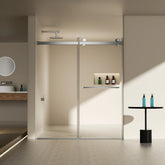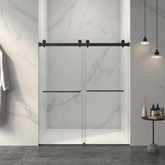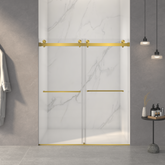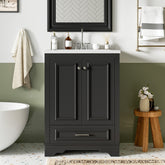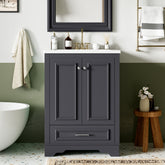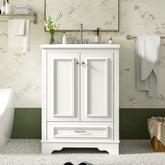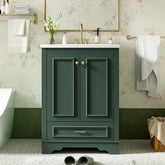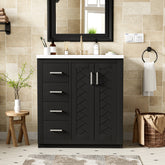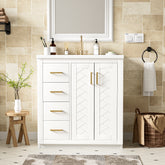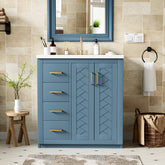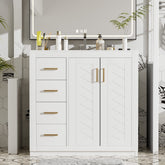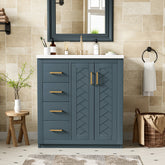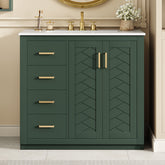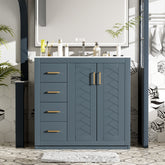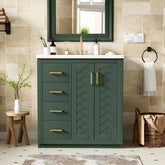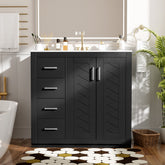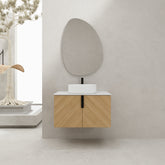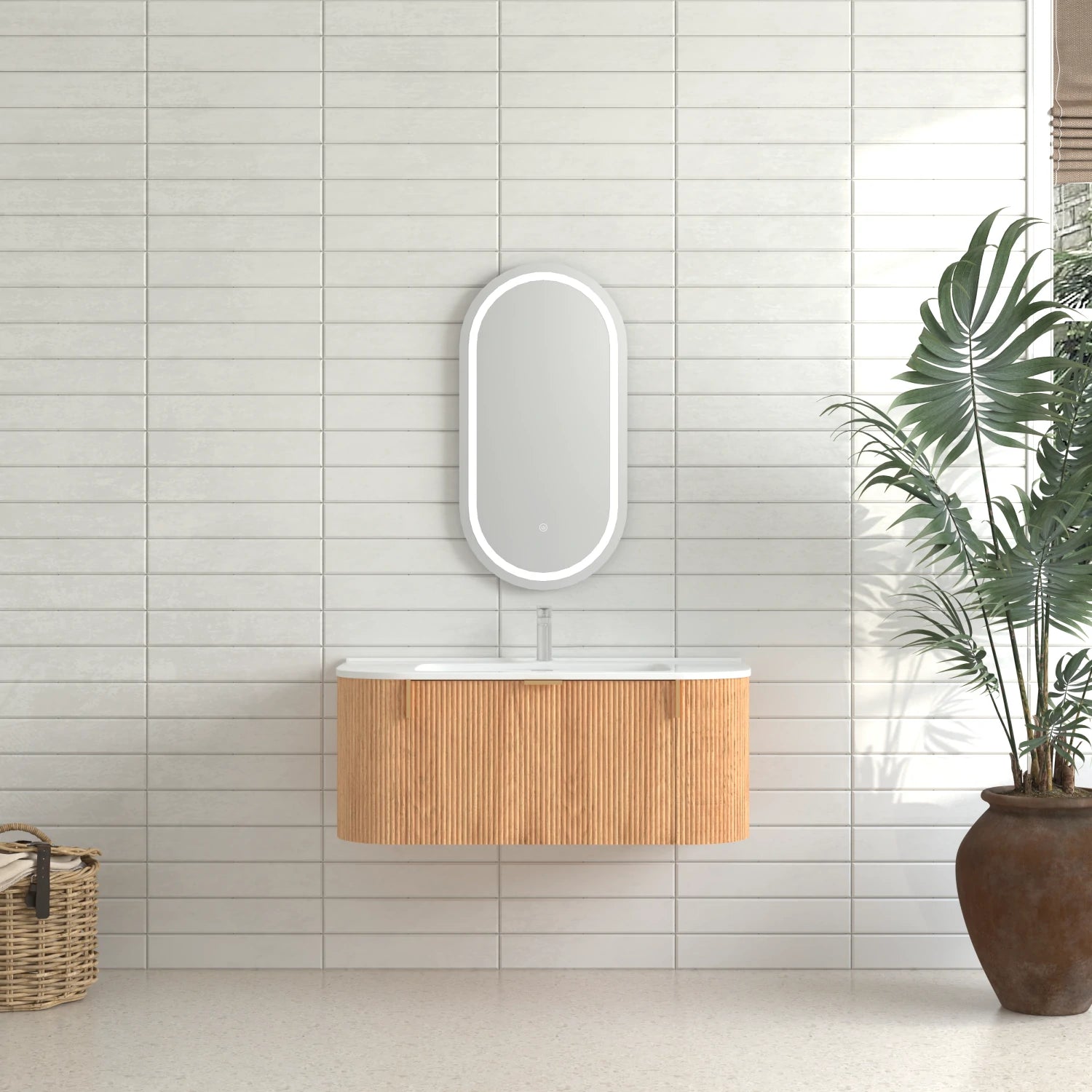Types of Shower Doors: Sliding, Pivot, Bi-Fold, and More Explained
1. Introduction
When I first started exploring options for upgrading my bathroom, I was surprised to learn how many different types of shower doors are available. From sliding and pivot shower doors to more space-saving designs like bi-fold and modern frameless glass options, the variety can be overwhelming if you're not sure what to look for.
Choosing the right shower door isn't just about aesthetics—it plays a major role in your bathroom's functionality, space efficiency, and even long-term maintenance. Whether you're working with a compact layout or designing a luxurious master bath, the type of door you choose will influence everything from daily convenience to resale value.
In this article, I’ll walk you through the most common shower door types, highlight their key features, and break down their pros and cons. My goal is to help you confidently determine which shower door style best fits your bathroom space, your design goals, and your lifestyle needs.
Let’s dive in and explore your options—because the right shower door can truly transform the feel of your entire bathroom.
2. Sliding Shower Doors
Sliding shower doors were the first style I seriously considered when I began my bathroom upgrade. Also known as bypass doors, they consist of two or more glass panels that slide past each other on tracks, making them ideal for saving space. Since the doors don’t swing out, they’re perfect for bathrooms with limited clearance around the shower or tub.
How Sliding Shower Doors Work
These doors glide along a top and bottom track, usually installed within a framed or frameless setup. You can open one panel while the other stays in place, offering easy access to the shower. Many modern versions feature smooth-glide rollers or soft-close systems that add a premium feel to the experience.
Ideal Bathroom Layouts
In my opinion, sliding shower doors work best in bathrooms where space is tight—especially when you don’t have room for a door to swing open. They’re commonly used in alcove showers or combined bathtub-shower enclosures. If your shower is installed between two walls, this door type is an excellent fit.
Pros and Cons
-
Pros:
- Space-saving design—perfect for small bathrooms
- Modern, minimalist appearance
- Available in framed, semi-frameless, or frameless styles
-
Cons:
- Tracks can require frequent cleaning to prevent buildup
- Opening is limited to one side at a time
Popular Materials and Styles
Most sliding shower doors are made of tempered glass, which is durable and easy to maintain. You can choose from clear glass for a clean, open feel or frosted and patterned designs for more privacy. I personally love the look of black metal frames or brushed nickel hardware for a more industrial or modern touch.
Overall, if you're looking for a balance of function and style—especially in a bathroom with space constraints—sliding shower doors are one of the best shower door types to consider.
3. Pivot Shower Doors
When I started comparing types of shower doors, pivot doors quickly stood out to me for their sleek appearance and traditional feel. A pivot shower door swings open like a regular door, either inward, outward, or both, depending on the hinge design. It’s a popular option if you want a clean, minimalistic look with easy access to your shower space.
Description and Operation
Pivot doors operate on a set of hinges mounted on the top and bottom of the door, allowing it to rotate smoothly. Some models use a side hinge, more like a standard hinged shower door. The door usually opens outward, but certain designs offer dual-swing capability, which I found useful in tighter spaces where flexibility matters.
Space Requirements
One thing I learned early on is that pivot shower doors require clearance in front of the shower to open properly. If your bathroom has sufficient open floor space, they’re a great fit. However, they’re not ideal for small bathrooms where the door might hit a vanity, toilet, or towel rack.
Best Use Cases
Pivot doors are best suited for stand-alone showers with wide openings. They also look stunning in frameless shower door designs, giving your bathroom a more high-end, spa-like feel. If you're remodeling a master or guest bathroom with ample space, this could be the perfect solution.
Pros and Cons
-
Pros:
- Wide entry for easy access
- Elegant, clean-lined appearance
- Available in both framed and frameless versions
-
Cons:
- Needs more floor space to swing open
- Water may drip onto the floor when opened outward
In my experience, pivot shower doors offer a great combination of form and function—as long as your bathroom layout supports them. They’re one of the more stylish shower door types and definitely worth considering if you're going for an upscale look.
4. Bi-Fold Shower Doors
When I was exploring shower door types for a smaller guest bathroom, I came across bi-fold shower doors—and they instantly caught my attention. These doors fold inwards, using a smart mechanism that combines the best of both sliding and swinging designs. If you’re short on space but still want style and accessibility, this is a fantastic option to consider.
Explanation of Folding Mechanism
Bi-fold shower doors typically consist of two glass panels connected by a central hinge. When opened, the panels fold in on themselves like a concertina. The door glides along a small track and pivots slightly at the hinges, making it easy to operate and surprisingly smooth. I found this mechanism especially useful in compact bathrooms where a full swing or sliding door just wouldn't work well.
Space-Saving Features
One of the biggest advantages of a bi-fold shower door is its ability to maximize entry space without requiring extra clearance. The folding action allows you to open the door fully, even in tight quarters. This makes it ideal for narrow bathrooms, corner shower enclosures, or areas where other shower door types would be too bulky.
Design Flexibility
Bi-fold doors come in both framed and semi-frameless styles, with various finishes and glass textures available. I liked that I could choose between clear glass for a clean, open look, or frosted options for added privacy. They also work well with both traditional and modern bathroom aesthetics, offering a high level of design flexibility.
Pros and Cons
-
Pros:
- Excellent for small or awkward bathroom layouts
- Creates a wide entry without needing swing clearance
- Modern, space-efficient design
-
Cons:
- More moving parts mean slightly higher maintenance
- Not as common, so fewer style options in some markets
If you’re working with limited space or looking for something a bit different from the usual sliding or pivot shower door, bi-fold doors are definitely worth a look. I was impressed by how functional and stylish they can be in tight spaces.
5. Hinged Shower Doors
When I imagined the classic bathroom look—something timeless and elegant—the hinged shower door immediately came to mind. These doors operate like a standard interior door, swinging open on side-mounted hinges. Whether you're leaning toward a traditional vibe or something more contemporary, hinged doors can adapt beautifully to either style.
Traditional and Modern Versions
Hinged shower doors have come a long way in terms of design. The traditional versions usually feature a metal frame, which adds a bit of structure and a vintage feel. But if you're like me and prefer a sleek, upscale look, you'll love the frameless or semi-frameless versions. These modern takes use thick tempered glass and minimalist hardware to create a clean, open feel that lets the rest of your bathroom design shine through.
Advantages for Large Bathrooms
One of the key things I learned is that hinged shower doors work best in bathrooms with ample space. Because they swing outward (and sometimes inward), they require more room than sliding or bi-fold shower doors. If you’re lucky enough to have a spacious layout, this type of door adds a touch of luxury and a wider entryway, making your shower feel more open and inviting.
Ease of Cleaning and Durability
I also appreciate how easy hinged doors are to clean—especially the frameless ones. With fewer metal tracks and minimal hardware, there are fewer places for soap scum and mold to collect. Plus, since most hinged doors are made with thick, high-quality tempered glass, they’re built to last and stand up well to everyday use.
Pros and Cons
-
Pros:
- Elegant, timeless design
- Easy to clean with minimal hardware
- Durable and sturdy construction
- Great visibility for tile and shower finishes
-
Cons:
- Requires more floor space to swing open
- Not ideal for small or cramped bathrooms
If your bathroom layout allows for it, a hinged shower door might be the perfect way to combine sophistication with everyday practicality. Among all the shower door types I explored, this one truly balances form and function in a classic way.
6. Frameless Shower Doors
When I wanted my bathroom to feel like a spa retreat, I knew a frameless shower door was the way to go. These doors are all about clean lines, open space, and a modern, upscale look. Unlike traditional framed models, frameless doors are made of thick, sturdy glass and use minimal hardware, making them a popular choice in luxury bathroom designs.
Style and Luxury Appeal
What drew me in the most was the aesthetic. Frameless shower doors instantly make any bathroom look bigger and brighter by eliminating the visual clutter of metal frames. If you’ve invested in beautiful tile work or a custom shower enclosure, this type of door showcases those features without distraction. It’s one of the most sought-after shower door types for contemporary and high-end interiors.
Maintenance Considerations
At first, I was concerned about cleaning, but frameless doors are actually easier to maintain than you’d think. With fewer crevices and no lower metal tracks to trap grime, they’re more hygienic and require less scrubbing. That said, because the glass is fully exposed, I found that regular wiping helps prevent water spots and soap scum. Using a squeegee after each shower keeps it crystal-clear.
Glass Thickness and Hardware Options
One thing I learned during my research is that frameless shower doors typically use thicker tempered glass—usually around 3/8" to 1/2"—to provide stability without the need for framing. The hardware is also customizable, from polished chrome to matte black or brushed nickel. I chose brushed brass hinges and handles to match my fixtures, and it made a big visual impact without overwhelming the space.
Pros and Cons
-
Pros:
- Sleek, modern look with open visibility
- Makes bathrooms feel larger and more luxurious
- Fewer places for mold and mildew to form
- Durable, high-quality tempered glass
-
Cons:
- Higher upfront cost compared to framed options
- Requires professional installation for best results
- Needs frequent wiping to maintain clarity
In the world of glass shower doors, frameless styles are hard to beat. They may come with a higher price tag, but in my experience, the combination of elegance, durability, and ease of maintenance made them worth every penny.
7. Other Types to Consider
While exploring different types of shower doors, I realized that not every bathroom fits neatly into the typical categories like sliding, pivot, or frameless. There are some unique and creative options that work especially well for non-standard layouts or for homeowners who want to make a bold design statement. Here are a few alternative styles I seriously considered—and you might want to as well.
Curved Shower Doors
If you have a corner shower or a rounded enclosure, curved shower doors are a fantastic fit. These doors follow the gentle curve of a round or quadrant shower base and often slide open along the arc. I love how they save space while still feeling elegant and high-end. Plus, the curved glass adds a soft, modern touch to the overall design.
Neo-Angle Shower Doors
Neo-angle doors are ideal for corner showers with a diamond or angular shape. They typically consist of three glass panels—two fixed and one hinged door—set at angles to form a corner entry. When I was helping a friend remodel their small master bath, this option worked perfectly. It maximizes usable space while giving the bathroom a clean, geometric look.
Partial Glass Panels (Walk-In/Open-Style)
For a truly minimal and contemporary vibe, I also considered walk-in shower designs with partial glass panels. These setups don’t have a traditional door that opens or slides—instead, a single pane of glass serves as a splash guard while the rest of the shower remains open. It’s incredibly easy to clean and adds a spa-like, airy feel. However, it does require a bit more planning to prevent water from escaping.
Pros and Cons of These Unique Options
-
Pros:
- Creative solutions for unusual layouts
- Modern, designer-friendly aesthetics
- Can save space and reduce maintenance
-
Cons:
- Some styles may be more expensive or harder to find
- Installation can be more complex
- Not all designs provide full water containment
Ultimately, whether you choose a curved shower door, a neo-angle enclosure, or a walk-in glass panel, these less conventional options prove there’s a perfect solution out there for every bathroom—no matter its size, shape, or style.
8. Choosing the Right Shower Door for Your Space
After diving deep into the different types of shower doors—from sliding and pivot to frameless and bi-fold—I realized that the best choice really depends on your unique space and lifestyle needs. There’s no one-size-fits-all solution, but by considering a few key factors, I was able to narrow down the perfect option for my bathroom. Here’s what helped guide my decision—and what might help guide yours too.
Bathroom Size
The size and layout of your bathroom are probably the most important things to evaluate. In smaller bathrooms, space-saving options like sliding shower doors or bi-fold shower doors work wonderfully since they don’t require a wide swing clearance. For larger bathrooms, you can go big with a hinged or even frameless shower door that adds luxury and drama to your design. I made sure to measure everything—twice—before committing to a door style.
Style Preference
Design plays a huge role too. Are you going for something sleek and modern? Then a frameless glass shower door might be the way to go. Prefer a more classic or structured look? A framed hinged door could complement that beautifully. I found it helpful to match my shower door’s finish and glass style to the rest of my bathroom fixtures and tile for a cohesive feel.
Budget
Let’s be real—budget matters. While frameless shower doors offer top-tier aesthetics, they also tend to be more expensive due to thicker glass and custom hardware. Sliding and framed doors are generally more budget-friendly and still look great. For me, it was about finding the best mix of form, function, and affordability.
Ease of Installation and Cleaning
I also considered how easy it would be to install and maintain my choice. Frameless doors look stunning, but they typically require professional installation. On the other hand, many sliding shower doors or framed styles can be installed as a DIY project. When it comes to cleaning, fewer tracks and minimal hardware generally mean less hassle—which is why I leaned toward a simple, open design.
At the end of the day, choosing the right shower door type is about balancing what you need with what you love. By weighing your bathroom’s dimensions, your design taste, your budget, and your willingness to clean or install, you’ll land on an option that not only fits—but elevates—your space.
9. Conclusion
After exploring the many types of shower doors—from sliding and pivot doors to bi-fold, hinged, and frameless shower doors—I’ve come to appreciate just how many options there really are. Each type offers its own unique benefits, whether it's saving space, adding luxury, or making cleaning easier. And let’s not forget the specialty options like curved or neo-angle shower doors that cater to more creative bathroom layouts.
What I’ve learned through this process is that the “best” shower door isn’t about trends—it’s about what works for your space, your style, and your lifestyle. A small bathroom may benefit from a sleek sliding or bi-fold door, while a spacious primary suite could shine with a frameless, hinged option that adds a luxurious touch. Budget, ease of maintenance, and even your DIY confidence level should all be part of your decision-making process.
If you're still unsure about which shower door type fits your needs, I highly recommend consulting a professional installer or bathroom designer. Or, better yet, browse our full collection to see a wide range of styles, materials, and configurations to match every kind of bathroom space.
Ultimately, the right shower door doesn’t just close off a space—it opens up your bathroom to better functionality, beauty, and comfort. Take your time, weigh your options, and choose what feels right for you.
Featured Products
AISU 24" Modern Freestanding Bathroom Vanity with Ceramic Sink, Black
- $332.13
- $332.13
- Unit price
- / per
AISU 24" Modern Freestanding Bathroom Vanity with Ceramic Sink, Dark Grey
- $332.13
- $332.13
- Unit price
- / per
AISU 24" Modern Freestanding Bathroom Vanity with Ceramic Sink, White
- $332.13
- $332.13
- Unit price
- / per
AISU 24" Modern Freestanding Bathroom Vanity with Ceramic Sink, Green
- $332.13
- $332.13
- Unit price
- / per
AISU 30" Solid Wood Floor Mounted Bathroom Vanity with Ceramic Sink Combo, Black
- $421.57
- $421.57
- Unit price
- / per
AISU 30" Solid Wood Floor Mounted Bathroom Vanity with Ceramic Sink Combo, White
- $421.57
- $421.57
- Unit price
- / per
AISU 30" Solid Wood Floor Mounted Bathroom Vanity with Ceramic Sink Combo, Cambridge Blue
- $421.57
- $421.57
- Unit price
- / per
AISU 36" Solid Wood Floor Mounted Bathroom Vanity with Ceramic Sink Combo, White
- $456.11
- $456.11
- Unit price
- / per
AISU 30" Solid Wood Floor Mounted Bathroom Vanity with Ceramic Sink Combo, Cyan
- $421.57
- $421.57
- Unit price
- / per
AISU 36" Solid Wood Floor Mounted Bathroom Vanity with Ceramic Sink Combo, Green
- $456.11
- $456.11
- Unit price
- / per
AISU 36" Solid Wood Floor Mounted Bathroom Vanity with Ceramic Sink Combo, Cyan
- $456.11
- $456.11
- Unit price
- / per
AISU 30" Solid Wood Floor Mounted Bathroom Vanity with Ceramic Sink Combo, Green
- $421.57
- $421.57
- Unit price
- / per
AISU 36" Solid Wood Floor Mounted Bathroom Vanity with Ceramic Sink Combo, Black
- $456.11
- $456.11
- Unit price
- / per
AISU 30" Wall-Mounted Bathroom Vanity With Top Ceramic Art Sink(Black) and Artificial Stone Slab, 2-Soft Close Door (KD-Packing)
- $464.47
- $464.47
- Unit price
- / per
AISU 30" Wall-Mounted Bathroom Vanity With Top Ceramic Art Sink and Artificial Stone Slab, 2-Soft Close Door (KD-Packing)
- $421.15
- $421.15
- Unit price
- / per
